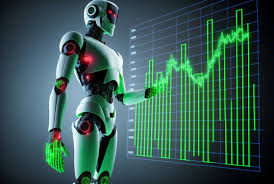
In the fast-paced world of foreign exchange (forex) trading, staying ahead of the curve is paramount. With markets open 24/5 and reacting swiftly to global events, traders are often faced with the challenge of monitoring multiple currency pairs simultaneously, executing trades at opportune moments, and managing risk forex robot. In such a dynamic environment, the role of technology has become increasingly prominent, with forex robots emerging as a popular tool for traders seeking efficiency and precision in their operations.
Forex robots, also known as expert advisors (EAs) or algorithmic trading systems, are software programs designed to automate the process of analyzing markets, identifying trading opportunities, and executing trades on behalf of the trader. These robots are built on sophisticated algorithms that utilize historical data, technical indicators, and predefined trading rules to make decisions in real-time. By removing the emotional aspect of trading and executing transactions with speed and precision, forex robots aim to capitalize on market inefficiencies and generate profits for their users.
One of the key advantages of forex robots is their ability to operate continuously, without the need for breaks or sleep, unlike human traders. This 24/5 availability ensures that trading opportunities are not missed, especially in volatile market conditions where timing is critical. Moreover, forex robots can monitor multiple currency pairs simultaneously, allowing traders to diversify their portfolios and capture opportunities across different markets.
Another benefit of forex robots is their consistency in adhering to predefined trading strategies. Unlike human traders who may deviate from their plan due to emotions or cognitive biases, robots execute trades based solely on logic and predefined parameters. This discipline helps to mitigate the impact of impulsive decisions and ensures that trades are executed in accordance with the trader’s risk tolerance and investment objectives.
Furthermore, forex robots can backtest trading strategies using historical data to assess their performance and refine their parameters. This iterative process allows traders to optimize their strategies for maximum profitability while minimizing the risk of losses. Additionally, some advanced forex robots incorporate machine learning algorithms that adapt to changing market conditions, allowing them to continuously improve their performance over time.
However, despite their potential benefits, forex robots are not without limitations and risks. One of the primary concerns is the risk of over-optimization, where a trading strategy performs exceptionally well on historical data but fails to deliver similar results in live market conditions. This phenomenon, also known as curve-fitting, can lead to significant losses if the robot’s performance does not match its historical backtest results.
Moreover, forex robots are not immune to technical glitches or errors in programming, which can result in unexpected losses or disruptions in trading operations. Additionally, the reliance on historical data and technical indicators may limit the robot’s ability to adapt to sudden market shifts or unexpected events, such as geopolitical developments or economic news releases.
Furthermore, the effectiveness of forex robots largely depends on the quality of the underlying algorithm and the parameters set by the trader. Building a robust